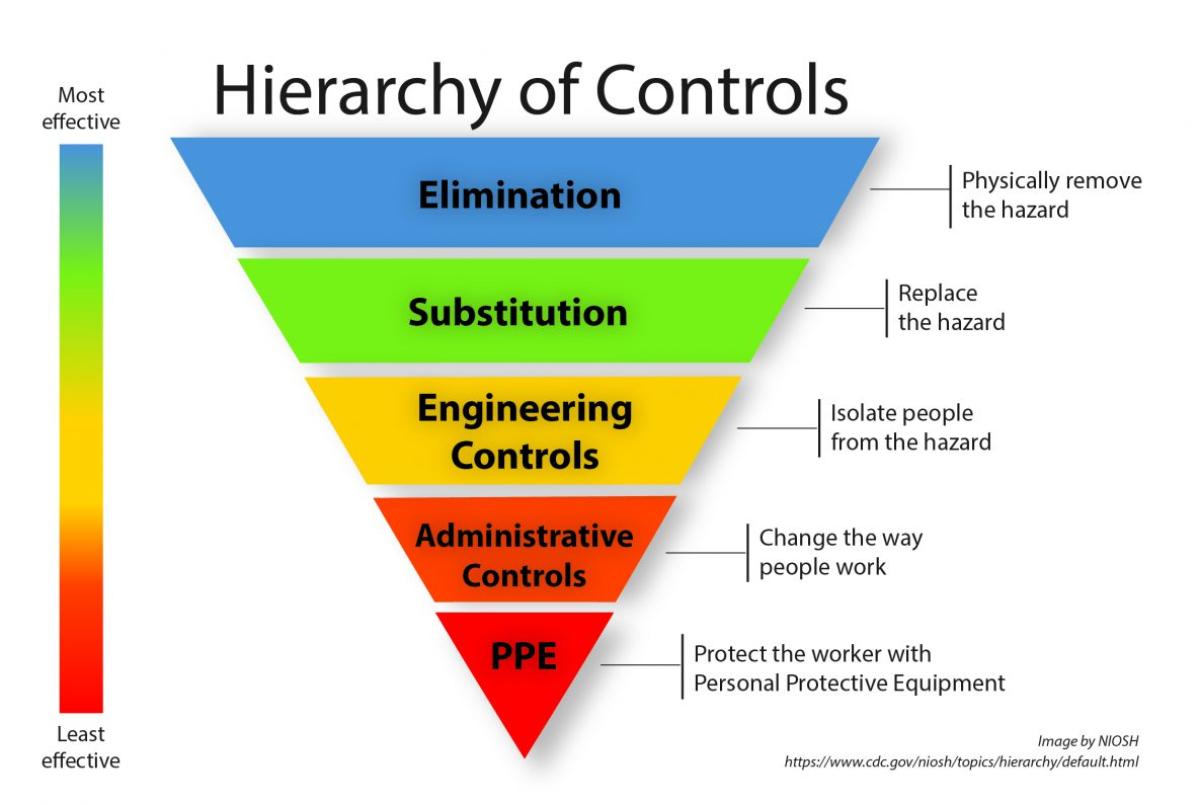Eliminate Hazard | Remove the source of the MSD hazard to eliminate exposure. | - Effective and no further action is required
- Most practical and cost effective in the design phase
| | - Powered roller conveyor instead of carrying boxes
|
Substitute Hazard | Replace with another approach that reduces the risk of MSD. | - Can be almost as effective as elimination
| - Substitution may still have risks of MSD
| - Re-balancing similar work tasks throughout a production line to reduce cumulative exposure to MSD hazards
|
Engineering Controls | Modify the design of the physical workplace to remove or block the MSD hazard from the worker by machinery, tools or equipment. | - Effective long-term controls
- Used by all workers
- If installed and maintained, sustainable control of exposure to hazards
| - May appear expensive compared to administrative controls
| - Implementing lift assist devices, powered hand tools, etc.
- Removing obstructions or adding adjustability features
|
| Administrative Controls | Changes to the work organization and work practices to reduce exposure to MSD hazards, such as job rotation, pace of work, training, breaks, etc. | - A wide range of controls are available
- May not require physical changes to the workplace
| - Worker is still exposed to the hazard at some level
- Resources required for monitoring adherence
- Training and retraining
| - Job rotation schedules can reduce exposure time to MSD hazards
|
| Personal Protective Equipment (PPE) | Barriers between the worker and the hazard that are worn by the worker | - Considered cost effective
- Requires little change to the workplace or work organization
| - Ongoing costs for new PPE
- Resources required for adherence to wearing PPE
- Many types of PPE not shown to be effective for MSD even under good conditions
| - Only some anti-vibration gloves and knee pads shown to be effective
- "Back belts” not shown to be effective as a general workplace control
|

